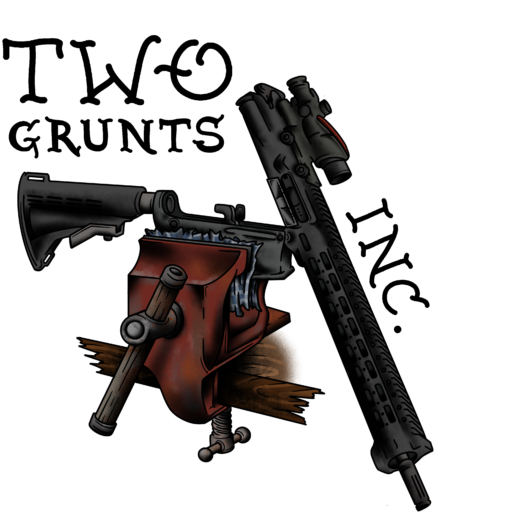Your cart is currently empty!
Polymer Striker-Fired Frame Disassembly
This week’s guide is going to go over disassembling a striker-fired polymer frame as quickly and painlessly as possible. The gun shown and worked on for this guide is one of our personal M&Ps. While we know that it isn’t the most popular striker-fired to work with, the idea and steps are relatively the same for Glocks and other striker-fired pistols.
Three locking pins need to be punched out. After that, the locking block, trigger bar assembly, and sere housing, or equivalent need to be removed from the frame. Then these internal pieces can be inspected, cleaned, and replaced/upgraded. There are plenty of resources on YouTube to help you with your specific firearm if needed. The pieces/parts labeled here are generally universal, as are the steps and procedures to conduct this disassembly process.
This level of maintenance is really not necessary for the average gun owner, but the knowledge is valuable to all. I typically only do this after I shoot several thousand rounds, if I feel there’s an issue going on internally, or if I wish to upgrade or replace a part.
While the level of skill needed for this isn’t extremely high, for those of you new to firearms or to pistols in general, maybe refrain from this type of disassembly/assembly until you are more comfortable with your firearm/platform.
Also, remember that the polymer frame is a serialized portion of your gun and is considered by the regulatory authorities to be the actual firearm itself.
Hope you all enjoy this guide and please be sure to like, share, and save it for later use. We make these to give a baseline to beginners and a refresher for the familiar, and to see who thinks they’re an expert, so we can remind them that there is no such thing.
Why Strip Your Frame?
- This level of disassembly is really not necessary for the modern, high-quality manufactured striker-fired pistol
- Glock, S&W, Sig, Springfield, etc.
- However, if you are shooting your pistol a lot, (which we hope most of you are) every 2,000-3,000 rounds this level of inspection and cleaning is recommended
- 100% not necessary, but if you carry a gun every day it’s better to be safe than sorry when it comes to maintenance and inspection
- This is also good knowledge if you want to upgrade certain parts of your firearm
- Triggers, slide locks, etc.
Conclusion
Thanks for making it to the end of this guide! If you got some value from this please make sure to share and save it for later.
Don’t forget to check out the rest of our guides!
